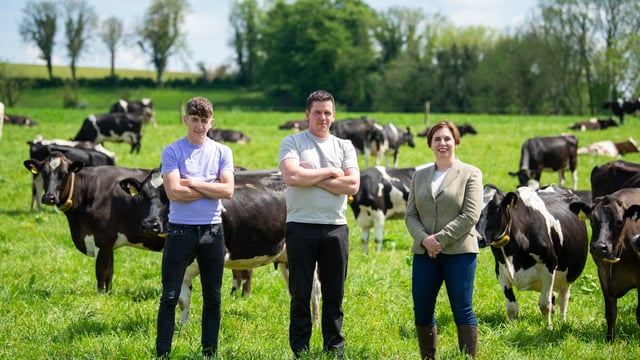Inputs and extreme weather cited as main EU food security risks
High, volatile input costs, as well as extreme weather events, have been cited as the most relevant risks to EU food security, according to the latest State of Food Security in the EU publication from the European Commission.
The spring 2025 edition of the report includes the results of a survey of members and observers of the European Food Security Crisis Preparedness and Response Mechanism (EFSCM) expert group.
The survey asked stakeholders to outline what they felt the main risks to food security were in the second half of 2024, compared to the first half of the year.
Generally, the identified risks to food supply maintain the same relevance as in the first half of 2024, but the distribution of answers is skewed towards an increased relevance for high input costs, extreme weather events, input price volatility, and the reliance of the EU food supply on imports.
The economic affordability of production inputs for agri-food producers is perceived as the most relevant risk for food supply by survey respondents when comparing the situation in the second half of the previous year to the first half.
49% of the responses consider high input costs more relevant than the previous survey period, while 42% of them consider input price volatility more relevant than before.
Prices of most production inputs used in agriculture, while lower than those seen in the years 2022 and 2023, are still significantly above the levels recorded before the energy crisis triggered by the Russian invasion of Ukraine in 2022.
This is particularly relevant for energy inputs (such as fuels for heating), electricity, and fertilisers.
According to the commission, these responses suggest that while input markets are generally stabilising, they are perceived as being at a level which is still significantly higher than 2022 for EU producers.
In addition, global tensions and uncertainties contribute to a general anxiety about the possibility of further degradation of the affordability of production inputs.
Several respondents pointed out that the current year could carry a risk of input costs increasing again, with potentially negative effects on food security and food supply, and ultimately on prices, fueling inflation.
These considerations refer mostly to energy costs (and other costs deriving from energy, such as fertilisers), but also to labour supply, as several replies mentioned the issue of labour shortages and the lack of generational renewal.
Extreme weather events remain a concerning risk factor for EU food supply, according to survey respondents, considered by 43% of them as more relevant in the second half of 2024 compared to the previous period.
According to the commission, these concerns are driven by the serious damage inflicted by the torrential rains and flooding in Spain, particularly Valencia, in October 2024, as well as the impact of Storm Boris in September in several eastern EU member states.
The flooding in Valencia caused serious damages to the agricultural sector in the region, with estimates of up to €1.4 billion of damages to rural infrastructure, irrigation systems, and greenhouses, along with a decline in crop yields, specifically for the fruits and vegetables sector.
According to 34% of the respondents, the need to import was considered a more relevant risk in the second half of 2024 compared to the first half of the year.
Analysis on trade diversification and dependencies highlights a market concentration for certain inputs used in food production contributing to a potential vulnerability of EU food supply due to the small number of input suppliers.
Trade data shows that the EU has been a net exporter for plant protection products and for certain agricultural machinery in 2024. However, it was a net importer for most fertilisers and feed additives.
Some survey respondents signaled that lysine in particular, which is an amino acid used as a feed additive, is mostly supplied by few countries, which could pose a supply challenge for the livestock sector.
With regard to fertilisers, most EU imports were moderately concentrated in 2024, including potassic, phosphates, and nitrogenous fertilisers.
Some imports of mixed fertilisers were also highly concentrated. However, the EU achieved a greater diversification of ammonia imports in 2024.
Agricultural commodity price volatility and high level of prices are two other potential risks to EU food security which have been considered as more relevant in the second half of 2024 compared to the first by a significant share of respondents (35% and 33% respectively).
Several respondents raised many sources of uncertainty that can affect commodity markets.
Geopolitical events remain a very relevant driver of uncertainty for many, not only linked to the economic impact of ongoing military conflicts, but also to the adoption of protectionist policies that can trigger retaliatory trade measures with a consequential increase in tariffs.
The commission said geopolitical tensions could cause supply disruptions and the need to redesign supply chains to ensure a viable source of inputs and commodities.
Some respondents noted that some regulatory requirements, such as the EU Deforestation Regulation, could generate additional compliance costs to operators when sourcing inputs in such a "difficult international environment".





